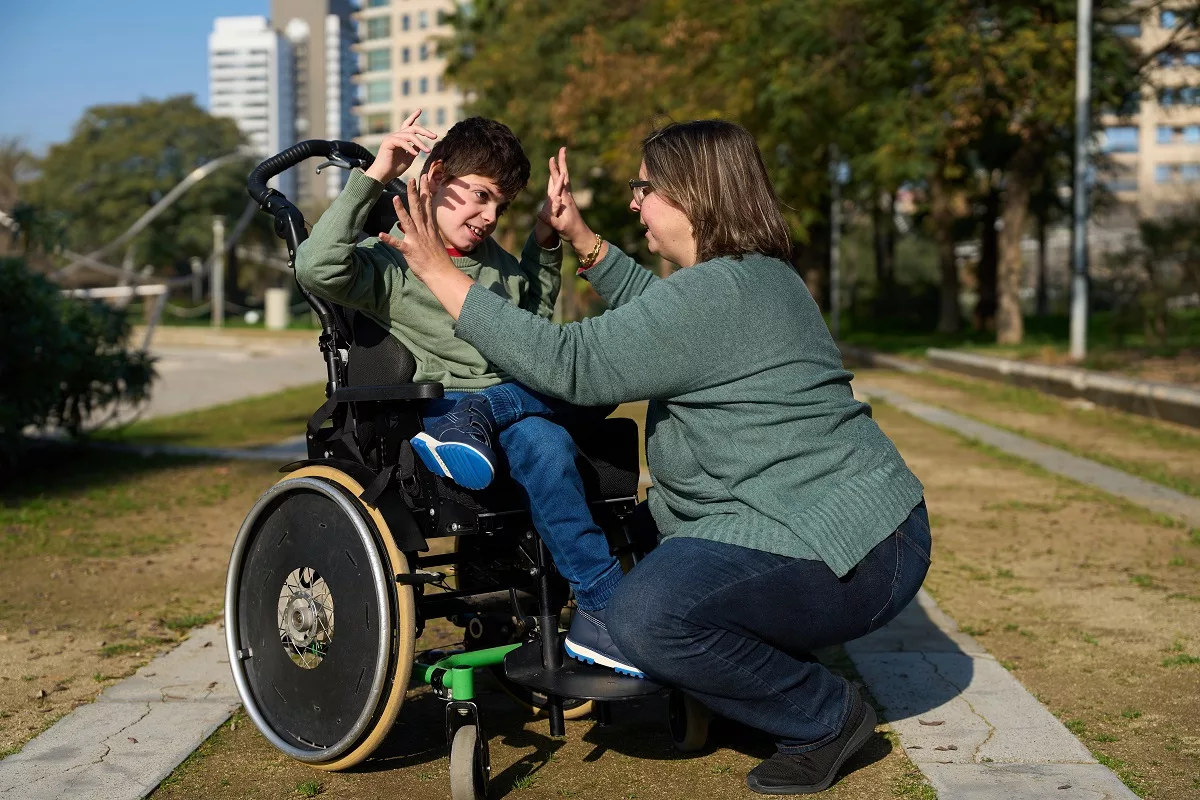A severe type of congenital muscular dystrophy that negatively affects infants is called Walker-Warburg syndrome. It often impacts the child’s muscles, eyes, and brain with certain symptoms that may worsen over time.
In general, it is not possible to cure this syndrome. That’s why treatment focuses on lessening the symptoms and prolonging the child’s life expectancy.
Usually, this condition is present at birth (also known as congenital), but sometimes, it may be diagnosed soon after birth. In most cases, children who develop this type of muscular dystrophy experience severe and even life-threatening symptoms, which significantly affect their life expectancy.
However, this is a rare condition that affects 1 out of 60,500 infants worldwide. Walker-Warburg syndrome may affect anyone who develops specific genetic mutations.
What is Dystroglycanopathy?
Sometimes, you may hear that this syndrome is identified as dystroglycanopathy. Generally, Walker-Warburg syndrome involves a group of health conditions that affect muscles in the child’s body. Thus, there are multiple types of muscular dystrophy that are categorized as dystroglycanopathy. In such cases, the condition is caused by certain genes that produce dystroglycan protein. Furthermore, this type of congenital muscular dystrophy is considered one of the most severe types.
In addition, children can inherit the abnormal genes that cause Walker-Warburg syndrome. It means the mutated genes pass from the biological parents to the biological children during pregnancy. When the child receives the abnormal gene from both parents, the condition is called autosomal recessive. If your child receives only one copy of the abnormal gene, they usually do not develop the condition and become a carrier.
What Are The Symptoms of Walker-Warburg Syndrome?
The symptoms usually occur at birth or in early infancy and range from moderate to severe, depending on the cause of the condition. It often affects the muscles, brain, and eyes. Check below some symptoms:
Muscles
When this condition affects the muscles, it affects the child’s ability to move. They also have a weak muscle tone (also known as hypotonia) that leads to problems with lifting the head, arms, and legs. Walker-Warburg syndrome is a progressive condition that makes symptoms worsen over time. Most babies experience trouble feeding during early infancy because their muscles do not work normally.
Brain
This syndrome may also affect the way the brain develops. Check below some symptoms that may occur in children with Walker-Warburg syndrome:
- Lissencephaly – This is a condition in which the brain appears bumpy without folds and grooves.
- Hydrocephalus – In such cases, a fluid buildup in the brain occurs.
- Dandy-Walker malformation – A cyst or growth abnormalities occur at their brainstem and cerebellum.
- Seizures
When this syndrome affects the child’s brain, it may lead to delayed development and intellectual disability.
Eyes
Usually, if your child develops this syndrome, you will notice that the eyes do not develop correctly. Check below some symptoms:
- Microphthalmia (small eyeballs) or buphthalmos (large eyeballs)
- Cataracts (also known as cloudy eyes)
- Problems with sending messages between the optic nerves and the brain
- Vision impairment (difficulty seeing objects clearly)
Causes
There are multiple genetic mutations that contribute to the development of Walker-Warburg syndrome. Although researchers have identified some of them that cause the disease, multiple genetic mutations cause the disease and have not been identified yet. Check below some genetic mutations that often cause this syndrome:
- POMT1 and POMT2
- CRPPA
- FKTN
- FKRP
- LARGE1
- POMGNT1
- ISPD
- GTDC2
- DAG1
Previous genetic mutations negatively affect the glycosylation of alpha-dystroglycan. If this process cannot take place, it affects the child’s muscle fibers, which cannot maintain their structure in the body. Furthermore, these proteins may affect the function of nerve cell movement in the brain, which often leads to lissencephaly.
Additionally, this syndrome can also disrupt the flow of neurons in the brain. As a result, the affected neurons continue to move into the fluid that surrounds the brain. In normal circumstances, the neurons stop when they reach their destination.
Risk Factors
While experts did not find all possible genetic mutations that cause Walker-Warburg syndrome, they have identified some factors that could increase the risk of developing it. Check below some examples:
- Genetic mutations in genes such as POMT1, POMT2, FKRP, or FKTN.
- Abnormal genes are received from both parents during pregnancy
What Are The Long-term Effects of Walker-Warburg Syndrome?
People with this condition may also experience some complications. These include:
- Lissencephaly
- Hydrocephalus
- Cerebellar malformations
- Brainstem abnormalities
- Dandy-Walker malformation
- Seizures
- Optic nerve problems
- Congenital muscular dystrophy
- Muscle weakness
- Glaucoma
- Cataracts
- Cleft lip or cleft palate
- Gastrointestinal problems
This document does not contain a complete list of complications of this syndrome. However, if you notice that your child experiences any of the previous ones, immediately contact your healthcare professional.
How to Prevent Walker-Warburg Syndrome?
There is no way to prevent this condition because it is a genetic disorder. However, you can discuss with your healthcare professional about genetic testing or genetic counseling before becoming pregnant.
Diagnosis
Commonly, the diagnosis of Walker-Warburg syndrome begins in the late stages of pregnancy, and it is confirmed when the baby is born. To detect this condition during pregnancy, doctors often perform an imaging test known as a prenatal ultrasound. When it is not clear, doctors may perform additional imaging tests after birth. These include CT (computerized tomography) and MRI (magnetic resonance imaging) scans. Moreover, doctors may also perform other tests that help confirm the condition. For example:
- Muscle biopsy – During this test, doctors will take a small amount of tissue from affected muscles to test it in the laboratory. It helps determine whether muscle fibers are healthy or not.
- Blood tests – These tests are often done to check for creatine kinase (CK) levels. Increased CK levels often indicate muscle damage.
- An eye examination – During this examination, doctors will check your child for irregularities linked to the disease.
- Genetic testing – This test involves a blood sample to check for abnormal genes that cause this syndrome.
Treatment
Healthcare professionals recommend treatments to reduce the symptoms and prevent dangerous complications of this syndrome because there is no way to cure the disease. Check below some treatments often recommended by doctors for people with Walking-Warburg syndrome:
- Surgery to remove the fluid from the brain (hydrocephalus)
- Medicines to prevent seizures
- Regular physical therapy to improve muscle strength
- A feeding tube for infants who experience feeding problems
Frequently Asked Questions
How does Walker-Warburg syndrome affect my child’s body?
This syndrome negatively affects the muscles, brain, and eyes’ development and function. As a result, your children may experience the following symptoms. These include developmental delays, problems with cognitive development, visual impairment, and others. Immediately contact your healthcare professional if you notice that your child experiences any of the previous symptoms.
What is the life expectancy of someone with Walker-Warburg syndrome?
Usually, children who develop this life-threatening condition die before the age of 3 due to severe ocular and brain irregularities. For more details, discuss it with your healthcare professional.
What are the symptoms of the Walker-Warburg syndrome?
These include:
- Cataracts (cloudy eyes)
- Problems with optic nerves
- Small eyeballs (microphthalmia) or enlarged eyeballs (buphthalmos)
- Vision changes
This article does not contain all possible symptoms that children with this syndrome. Ask your healthcare provider if you have additional questions.




